The rise in AI-driven searches is transforming the way users search and retrieve information online.
For example, Google’s AI overview feature is reducing the need for readers to click through to articles. Instead, they get answers to their queries without scrolling or leaving the search results.
According to Search Engine Land, up to 71.5% of people use AI tools like ChatGPT for search.
Readers get answers in a convenient chatbox, and the responses are more tailored and specific than ever before.
This shift in user and search behavior means content marketers need to optimize their content for AI-search platforms to not get left behind. So, this article explains how to optimize your content for AI search results.
What you will learn:
- What AI search engine optimization is and why it matters
- How AI searches are rising and what you need to do to stay relevant
- How to optimize content for AI-search platforms
What is AI search optimization?
AI search engine optimization involves tailoring content to perform well in AI-driven search environments, such as large language models (LLMs), generative AI tools, and chat-based search interfaces.
While traditional SEO focuses on ranking your content in the search engine result pages (SERPs), AI search optimization ensures your content appears in AI-generated responses and AI systems.
For example, this may include Google’s AI overviews, which appear in the number 1 result for most queries. Here’s an example for the query, “how to build a home office.”
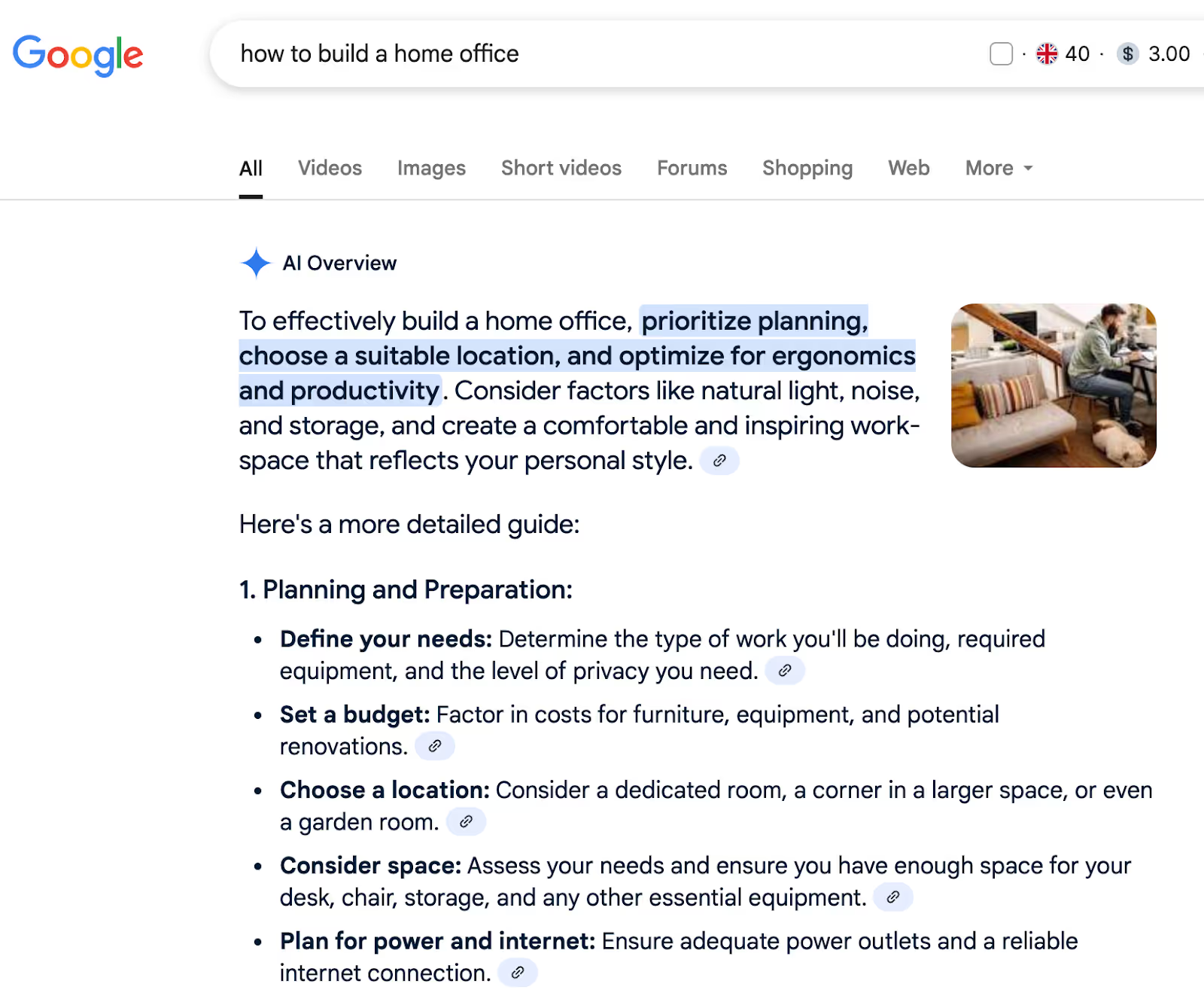
It also includes LLM results, like searches conducted in ChatGPT, Claude, Gemini, or Perplexity. For this reason, AI search optimization is also being labelled as LLM optimization, answer engine optimization, and generative engine optimization.
For example, Surfer appears frequently in LLMs for related queries. When a user searches a query like the one below, the Surfer tools show up as the number 1 search result.
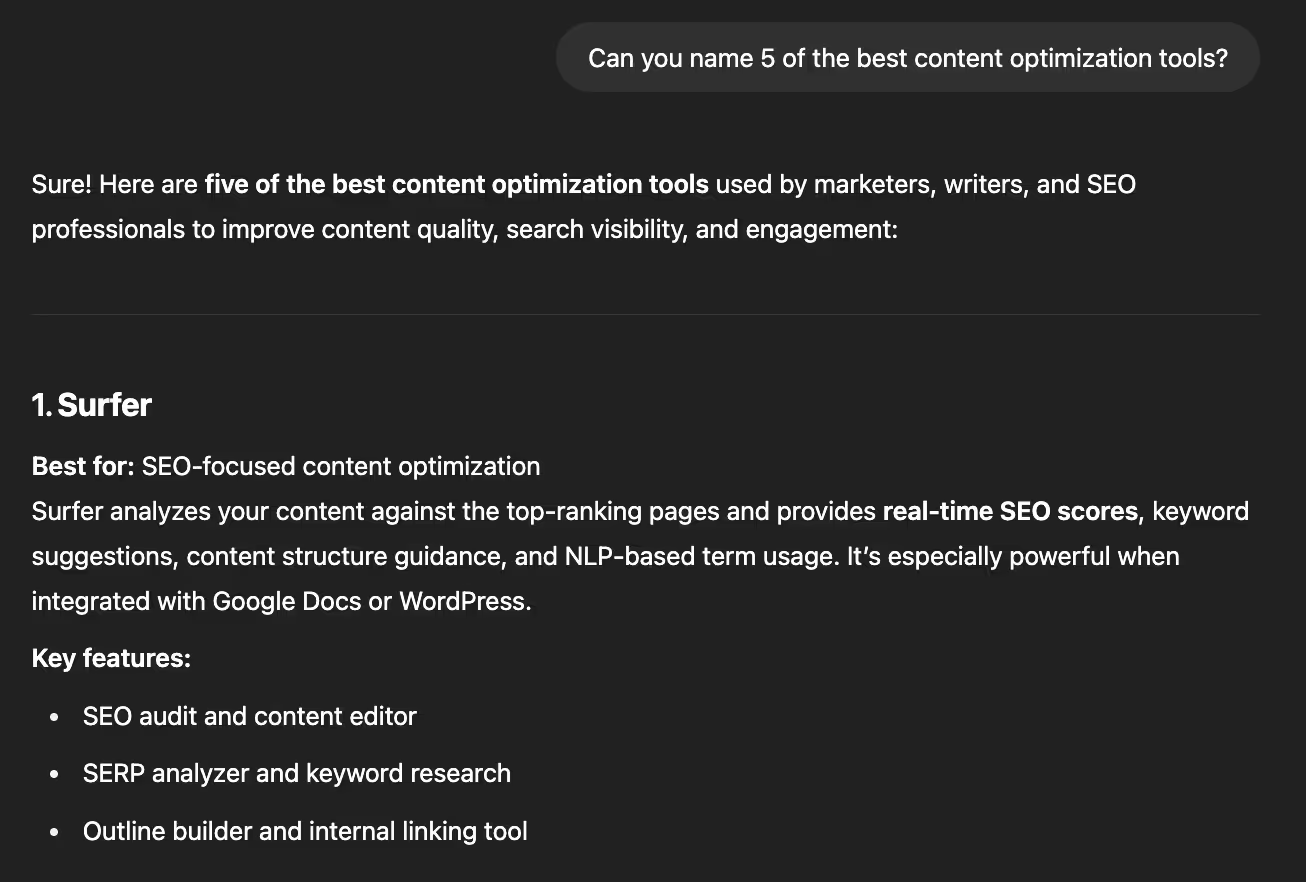
Understanding how LLMs work and how AI chat interfaces use LLMs will enable you to optimize your content for AI-related results to stay ahead of the content curve.
Organic search traffic in this emerging form is gaining importance because of the rise of generative AI tools, including ChatGPT and others.
These tools now massively influence how people retrieve information — you want to appear in these results.
Traditional SEO vs AI search optimization
Traditional SEO strategies are about ranking web pages in search engines. By landing a top search result, people are likely to click on your web page and enter a stage of the buying funnel. SEO tools are often used to perform keyword research, and various SEO techniques are used to increase the likelihood of content ranking.
On the other hand, AI search optimization is about training AI models to recognize, rank, and cite your content as trustworthy sources in their answers.
Instead of appearing exclusively in Google search results, you can also appear in AI-generated responses in tools like ChatGPT.
AI-driven SEO creates user-generated content based on a specific query. AI engines produce relevant content, leveraging existing content in traditional search engines.
AI searches often do not require the user to leave the tool. They receive an answer in a chatbox and can ask follow-up questions. Brand mentions may be included and links to articles, but the user does not have to click these.
Here’s an example Google search, excluding paid results for the query, “How do I add a blog to WordPress.”
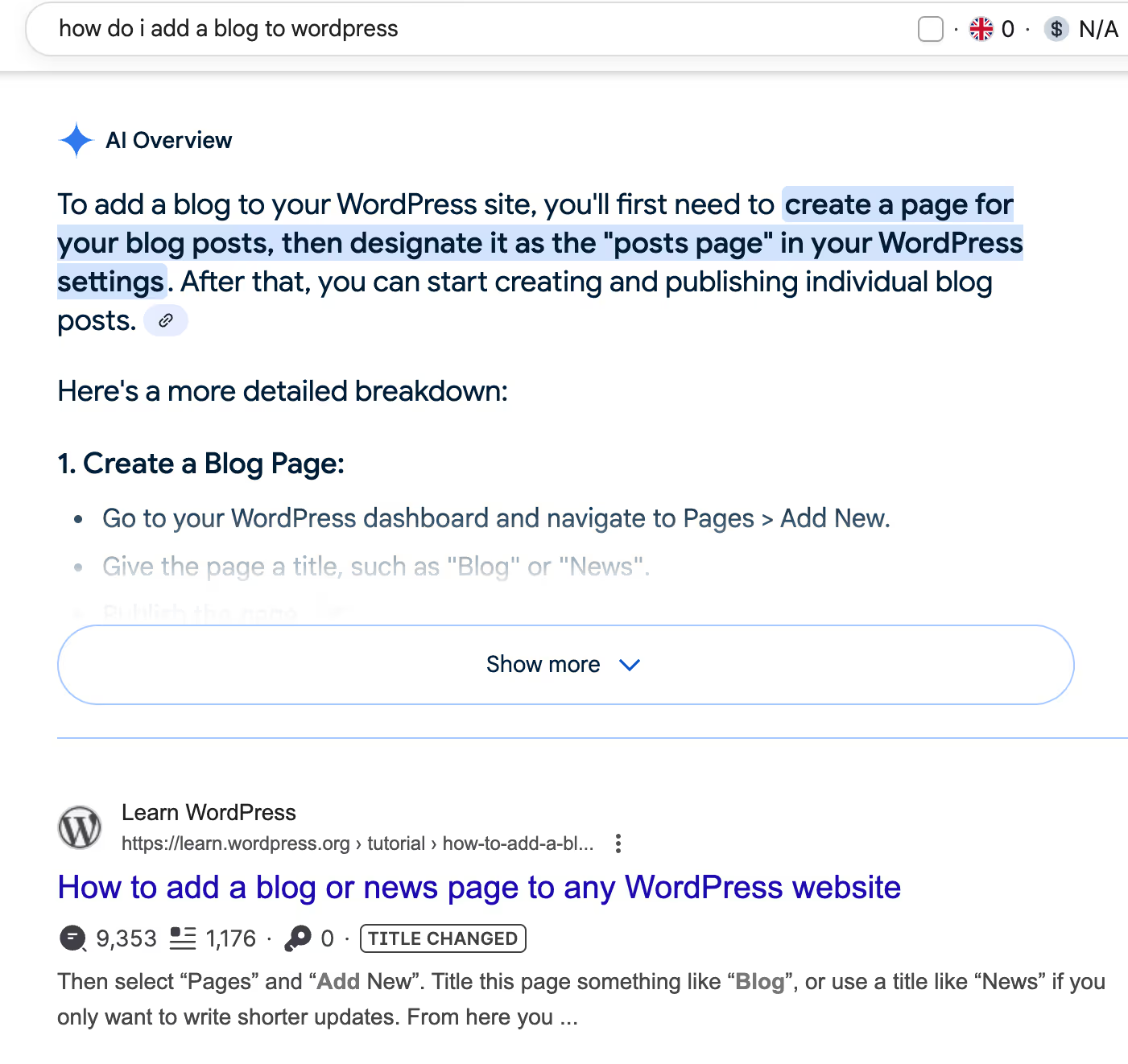
And here’s the same query but using ChatGPT.
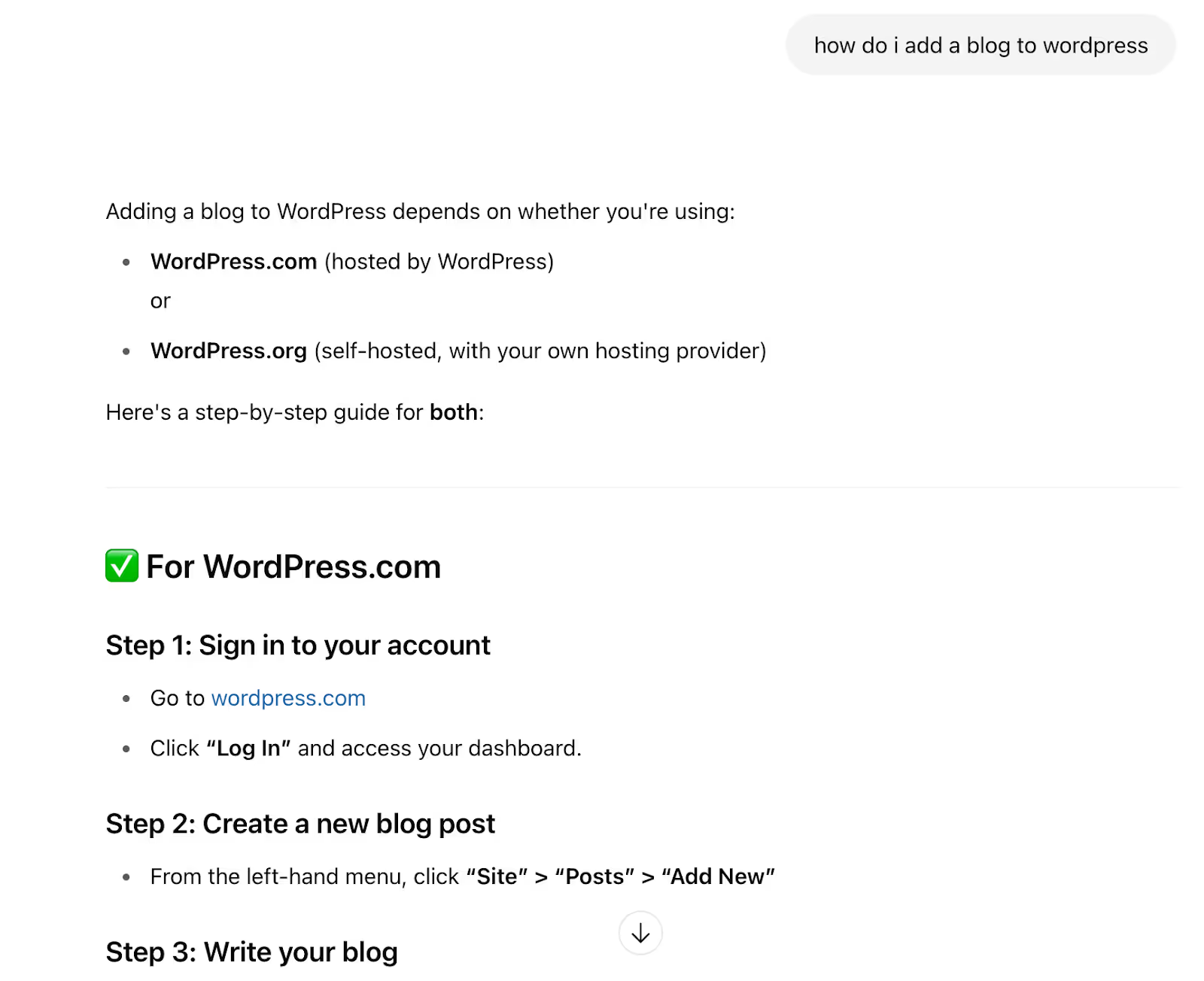
While the AI overview still appears in the SERPs, users are more likely to click on the search results to find out more information.
Why you should optimize for AI search engines
Higher Visibility surveyed 1,500 Americans about their search habits and preferred platforms.
71.5% of respondents use AI tools like ChatGPT for search. However, only 14% of users use these tools daily, while most use AI to complement and not fully replace traditional search.
This does not take into account built-in AI features in search engines, like Google’s AI overviews, which cannot be avoided.
With 71.5% of Americans using AI tools, appearing in AI search results allows you to capture a wider audience.
If you choose to ignore AI optimization and do not optimize content for LLMs, you risk losing visibility, reduced organic traffic, and brand dilution.
AI is only becoming more popular — users are looking for quick and concise, high-authority answers rather than scrolling through traditional search results.
Leverage AI, create valuable content, and gain a competitive edge.
It’s one of the reasons CTRs are down for most websites at the moment — users are getting their answers via AI features.
8 ways to optimize content for AI search engines
Optimizing content for AI search engines does not have to be complicated. Chances are, you’re already doing a lot of the optimization techniques to increase SERP rankings.
But there are a few extra tasks you can do to increase your chances of ranking in AI search engines.
1. Ensure clear content
Structure your content to flow from broad concepts, like definitions, to detailed points, such as how-tos or steps.
Clearly label sections with descriptive H2s and H3s. This will help AI search engines better understand your content and hierarchy of information.
For how-to or instructional content, break down processes into clear steps. Label these steps explicitly (e.g., step 1, step 2…) to help AI search engines pull directly from your content.
Here’s a very basic example of how to add page numbers to a header or footer in Word.
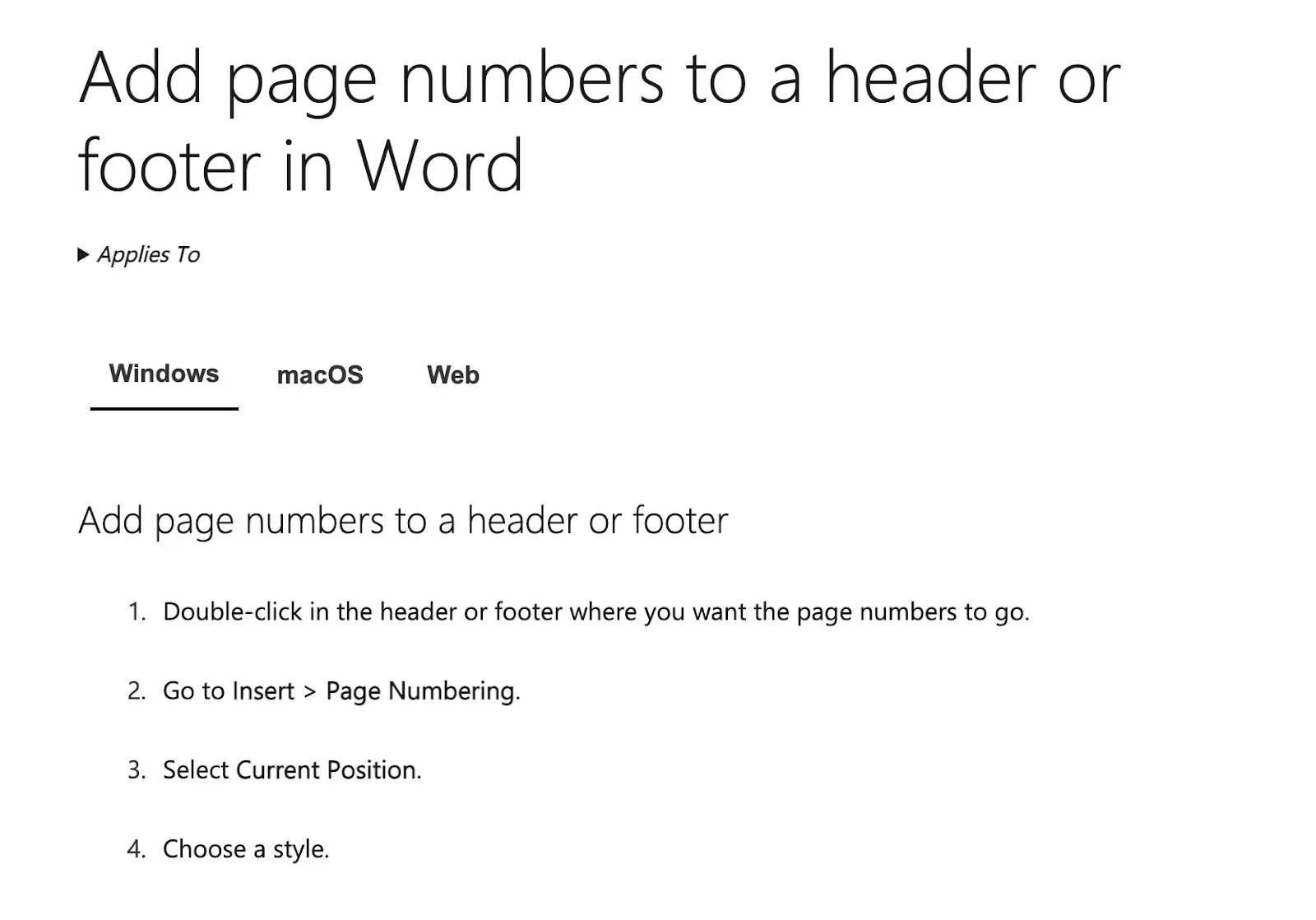
These instructions are clear and can easily be understood by AI.
This is evident as the AI overviews link to this page from Microsoft and also other relevant pages on their site, where they have clearly outlined steps to add page numbers.
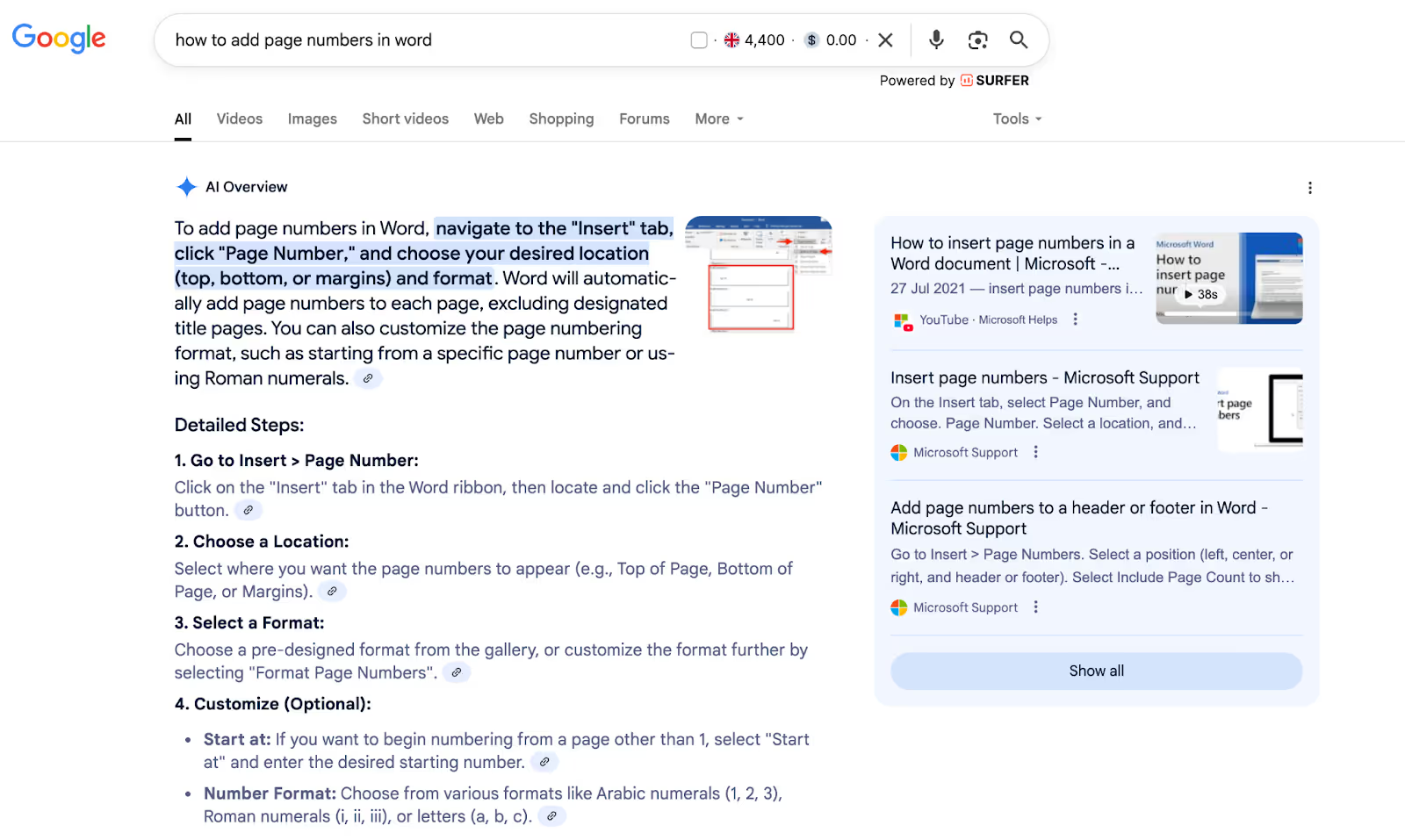
2. Implement templates and tables
LLMs prioritize easy-to-understand content, including data. When you use templates and tables, this makes it easy for AI to extract and repackage information, citing your content in their answer, whether using ChatGPT or featuring in an AI overview.
Tables are excellent for comparison content, pricing tiers, outlining a process, or other forms of data entry.
Here’s an example AI project management tool comparison table from ClickUp.
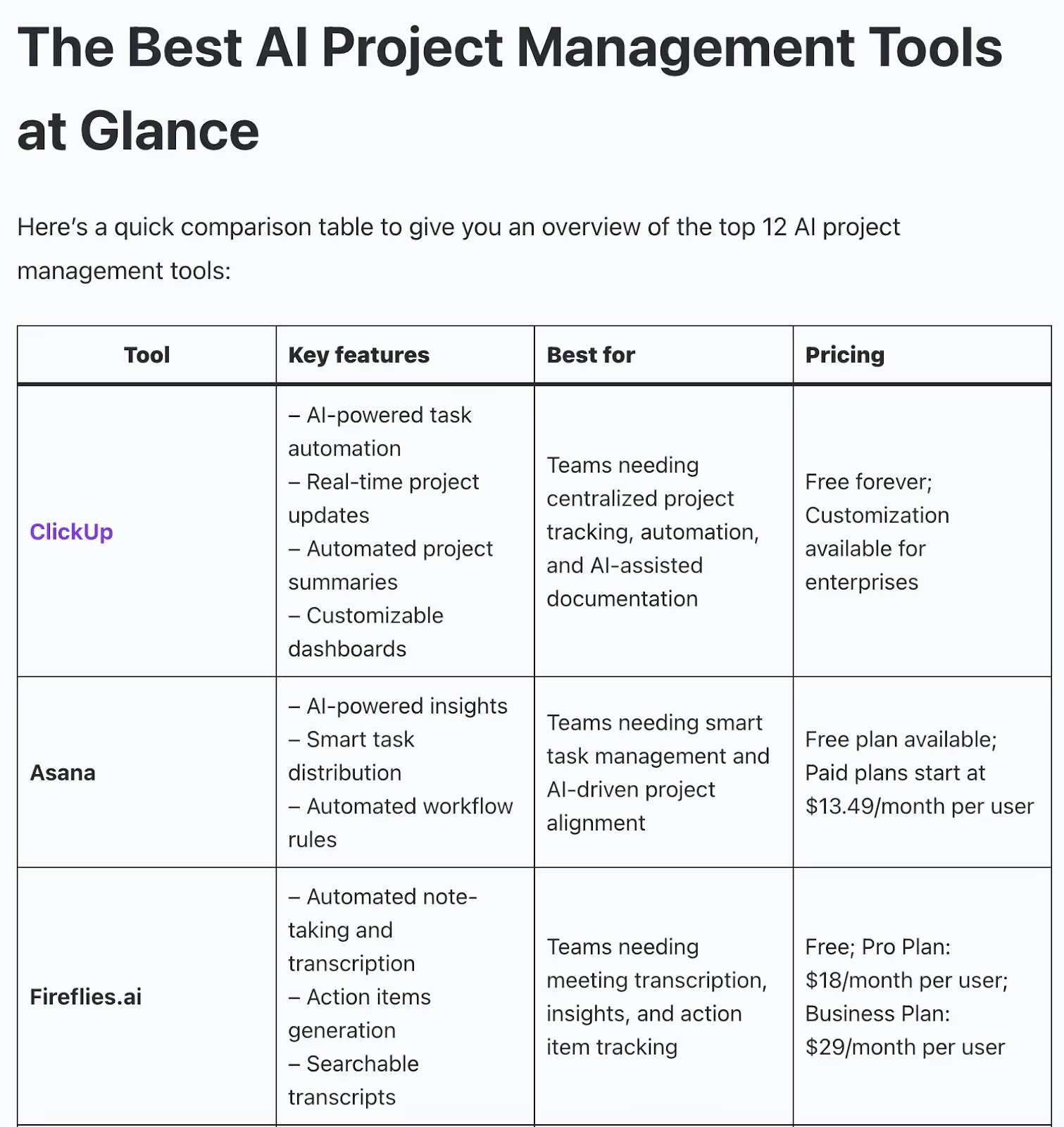
When a user asks for an AI project management tool comparison, there’s a chance this data will be extracted, repurposed, and cited in LLMs.
3. Condense information efficiently
This is an excellent practice for traditional SEO as well.
Condense information efficiently by eliminating fluff and redundancy.
Use bullet points and lists where possible to present key information clearly. Here’s an example from Notion on their blog post on how to delete a Proton Mail account.
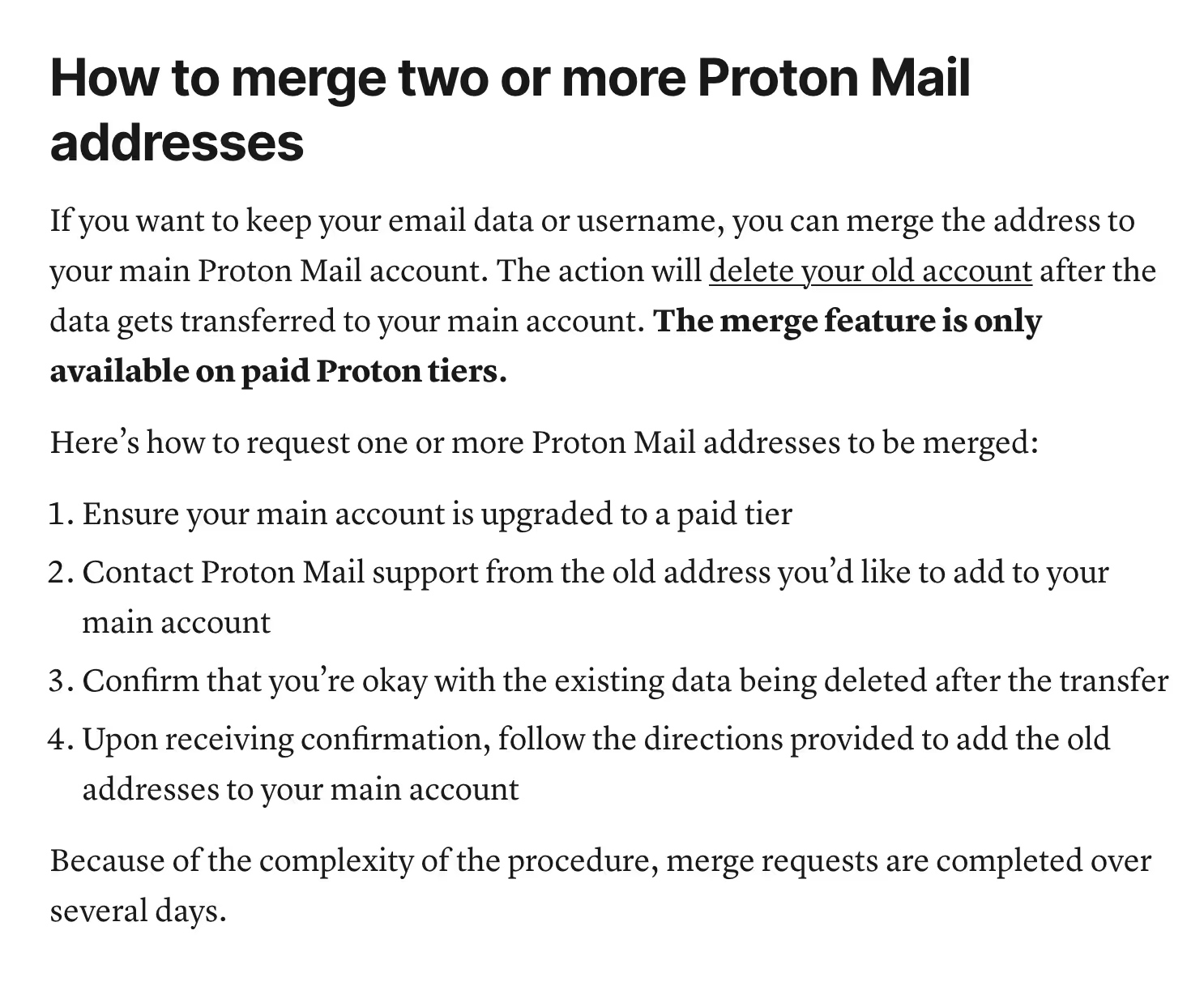
Use numbered and consistent heading structures to improve flow and readability, like this blog on product development from Monday.
Also, number or add bullets to the main and sub-sections to help users navigate your content effectively.
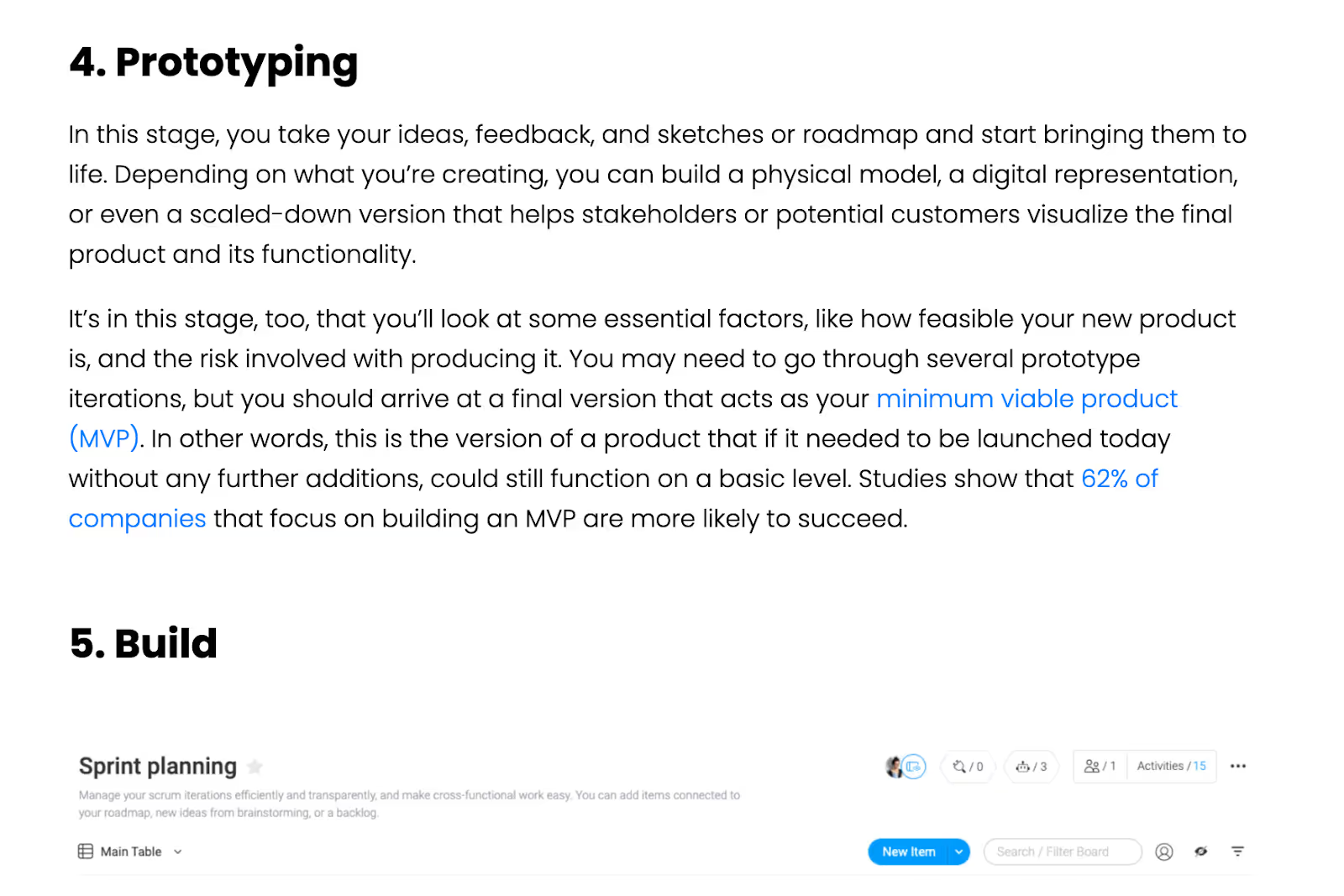
A good example of this is the Key Takeaways sections, which we include at the end of Surfer blog posts.
By condensing key information into bullets, it’s not only easier for readers to digest, but it also makes it easier for AI models to better understand the content.
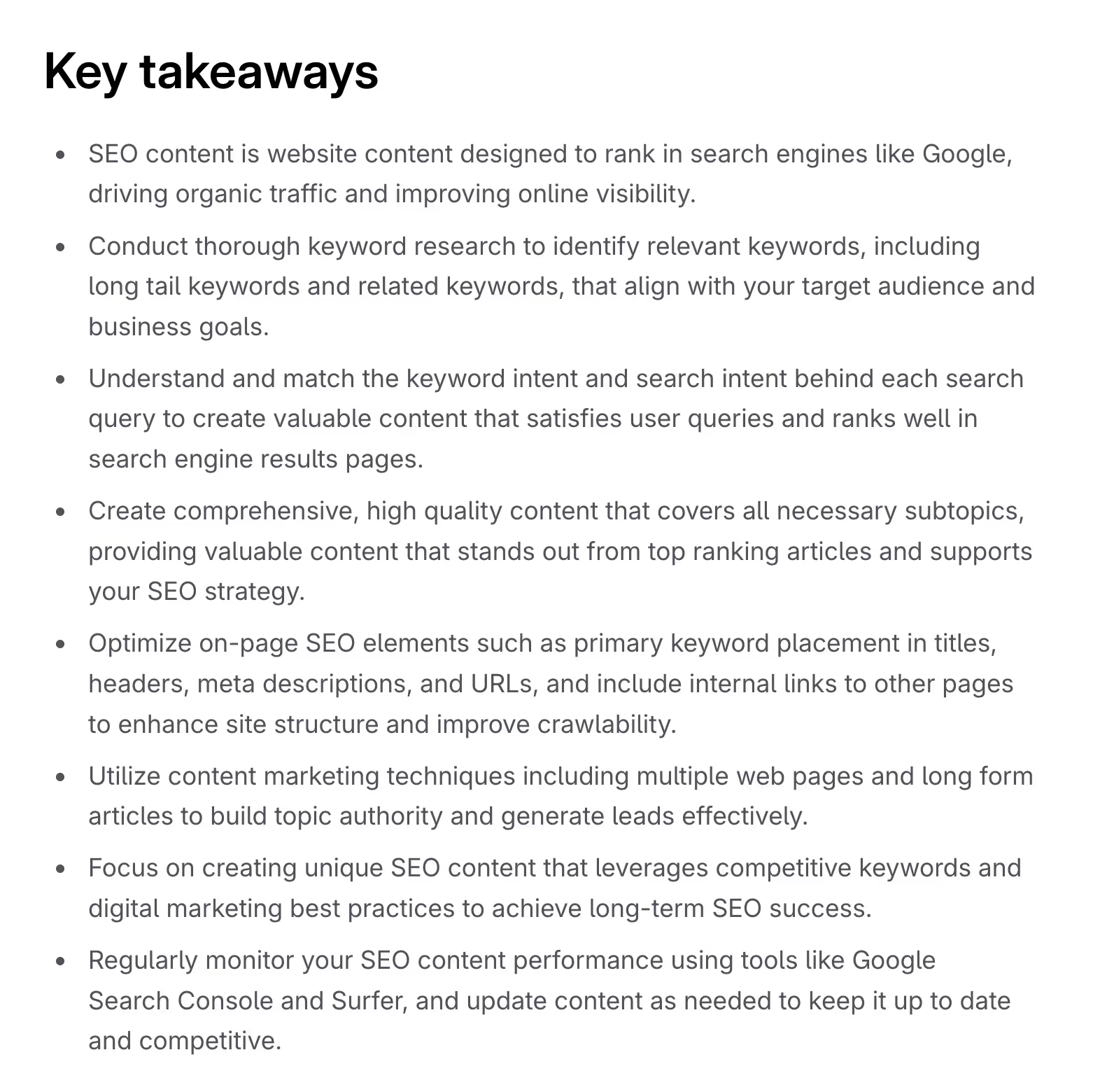
4. Include credible sources
AI models pull information from hundreds of websites.
To stand out, include credible sources to showcase trustworthiness. This can include scientific journals, case studies, or even expert quotes.
Here’s an example of a quote from a qualified running coach in a blog post on how to train for a marathon.

By using reliable sources, especially for definitions or important facts, opinions, or emerging ideas, you’re not only telling but showing AI search engines that you are an authority.
Here’s an example of citing research from Livestrong for a definition of what’s considered a good VO2 Max.

5. Answer questions on LLMs
LLMs, like ChatGPT and Google’s AI Overviews, often cite brands that show up repeatedly in trusted, helpful, and authoritative content.
To increase your visibility in LLMs, engage where large language models look for real answers — places like Reddit, Quora, Stack Overflow, and niche forums.
Focus on answering questions thoroughly, offering real value, and using natural language. These contributions help train LLMs to associate your brand with credibility and expertise, boosting your chances of being mentioned in AI-generated responses.
Also, when writing your own content, help AI recognise the purpose and primary focus of your content piece. Confirm relevant early by stating the page topic and including the target keyword in the article introduction and above the fold.
Here’s an example blog from Campaign Monitor on a guide to email whitelisting.
They mention their primary keyword in the beginning, and the introduction clearly confirms the article is about email whitelists and introduces the reader to the benefits of whitelisting and why it matters.
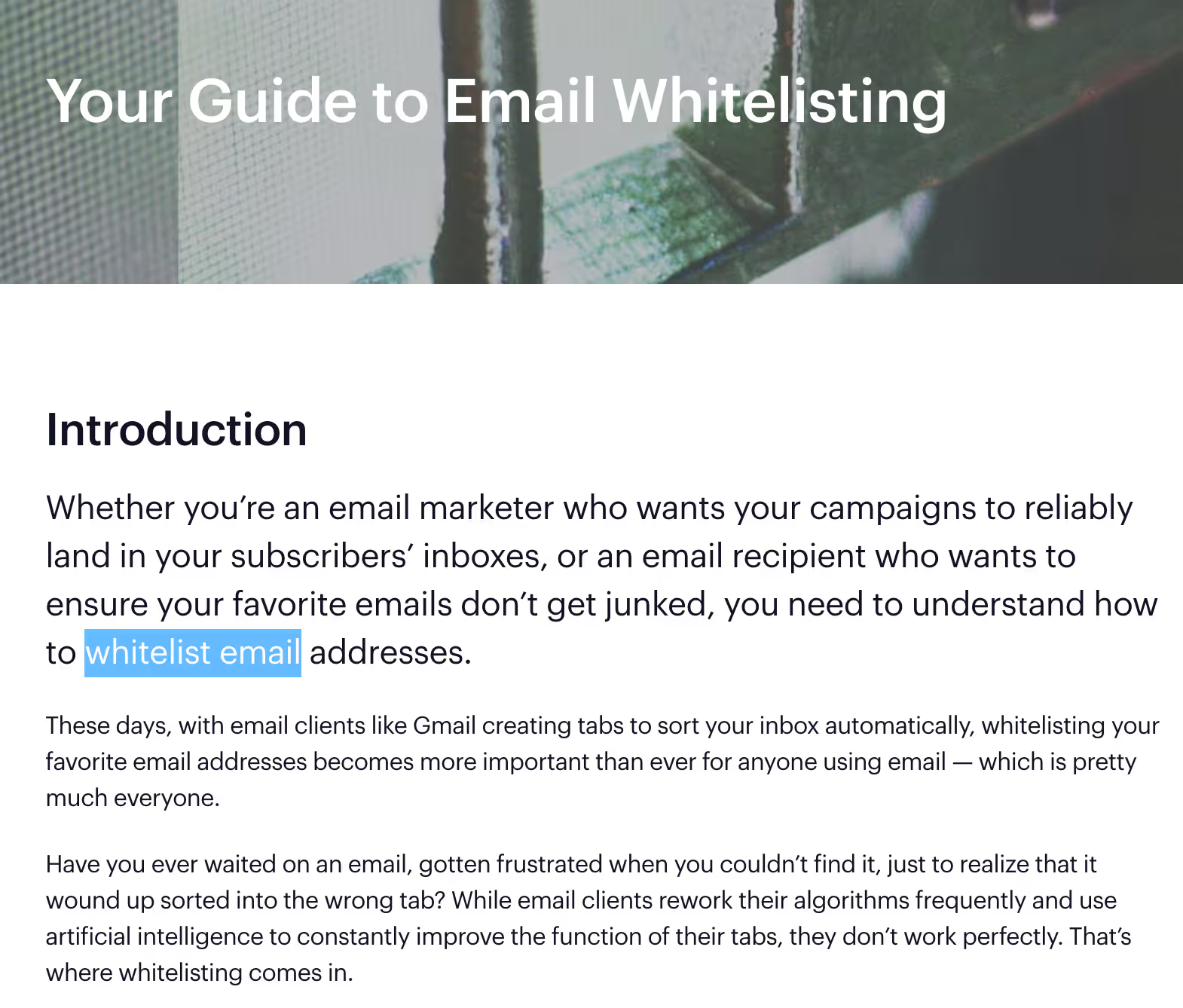
6. Get a Google Knowledge Graph
AI tools often cross-reference answers with structured sources like Google’s Knowledge Graph and Wikipedia. If your brand is recognized as an entity in these databases, there’s a strong probability that you’re more likely to be cited in AI-generated content.
Google’s Knowledge Graph is Google’s database of real-world entities, like people, companies, places, and products. This knowledge base is used to connect facts across the web.
When your brand is part of the knowledge graph, it gives AI systems a verified reference point to confirm your brand’s identity, increasing trust and visibility. This is likely to increase the probability of you appearing in AI results.
To get listed:
- Ensure consistent NAP (Name, Address, Phone number) citations across your website and directories
- Claim your Google Business Profile (if relevant and you have not done so already)
Build a strong digital footprint on authoritative sites (like Crunchbase, LinkedIn, and news mentions) - Be active on social media and make sure data is consistent across all channels
- Submit feedback via Google’s Knowledge Panel form to suggest your entity for inclusion
Getting into the Knowledge Graph isn’t instant, but it’s one of the most impactful steps for long-term AI visibility and brand recognition.
7. Practice traditional SEO methods
Although AI search optimization is necessary, you should still practice traditional SEO methods.
Many users are still using Google and other search engines to answer their queries.
Seer Interactive conducted a study of more than 300,000 keywords and assessed 10,000 questions queried through the LLM and found websites ranking on page 1 had a strong correlation with LLM mentions.
Continue to practice traditional SEO practices to also rank in AI results.
Most data from AI models is trained on sources from search engines.
Deep, comprehensive content signals to LLMs that your site is an authoritative source worth citing when users ask detailed questions on the topic.
Google’s E-E-A-T quality rater guidelines still apply:
- Experience: first-hand knowledge, like how you or your team solves a problem.
- Expertise: Deep understanding, unique insights, and professional credentials (including expert quotes and contributions).
- Authorativeness: Are you mentioned by credible sources? Digital PR and expert round-ups are a must.
- Trustworthiness: Is your content accurate and up to date? Author bios with proper credentials can also help build trust.
By satisfying these guidelines, you can be assured that you have covered a topic comprehensively and with credibility.
8. Invest in digital PR
If you want your brand to show up in AI-generated answers and LLMs, consider investing in digital PR.
Landing mentions in trusted publications, industry roundups, and expert-led content helps AI models recognise your brand as authoritative.
It’s not so much about building backlinks — although it will likely help with regular search results — it’s about earning visibility in places AI learns and pulls data from.
You can use websites like Qwoted, where you can reply to requests from journalists and publications to get your brand featured.
How to track and measure AI search visibility
As AI-generated answers become a regular and much bigger part of search, it’s essential to track where your brand is mentioned. However, unlike traditional search rankings, visibility in tools like ChatGPT or Google’s AI overviews can’t be measured with regular SEO software.
You can use a tool like Surfer’s AI Tracker to monitor your brand’s presence across LLMs.
Surfer’s AI Tracker monitors your brand’s visibility across AI-driven platforms like ChatGPT, showing how often and where you're mentioned.
It tracks metrics like average presence, visibility, and source data to help you identify gaps and optimize content. With clear insights and a simple interface, Surfer helps track and optimize your AI search presence.
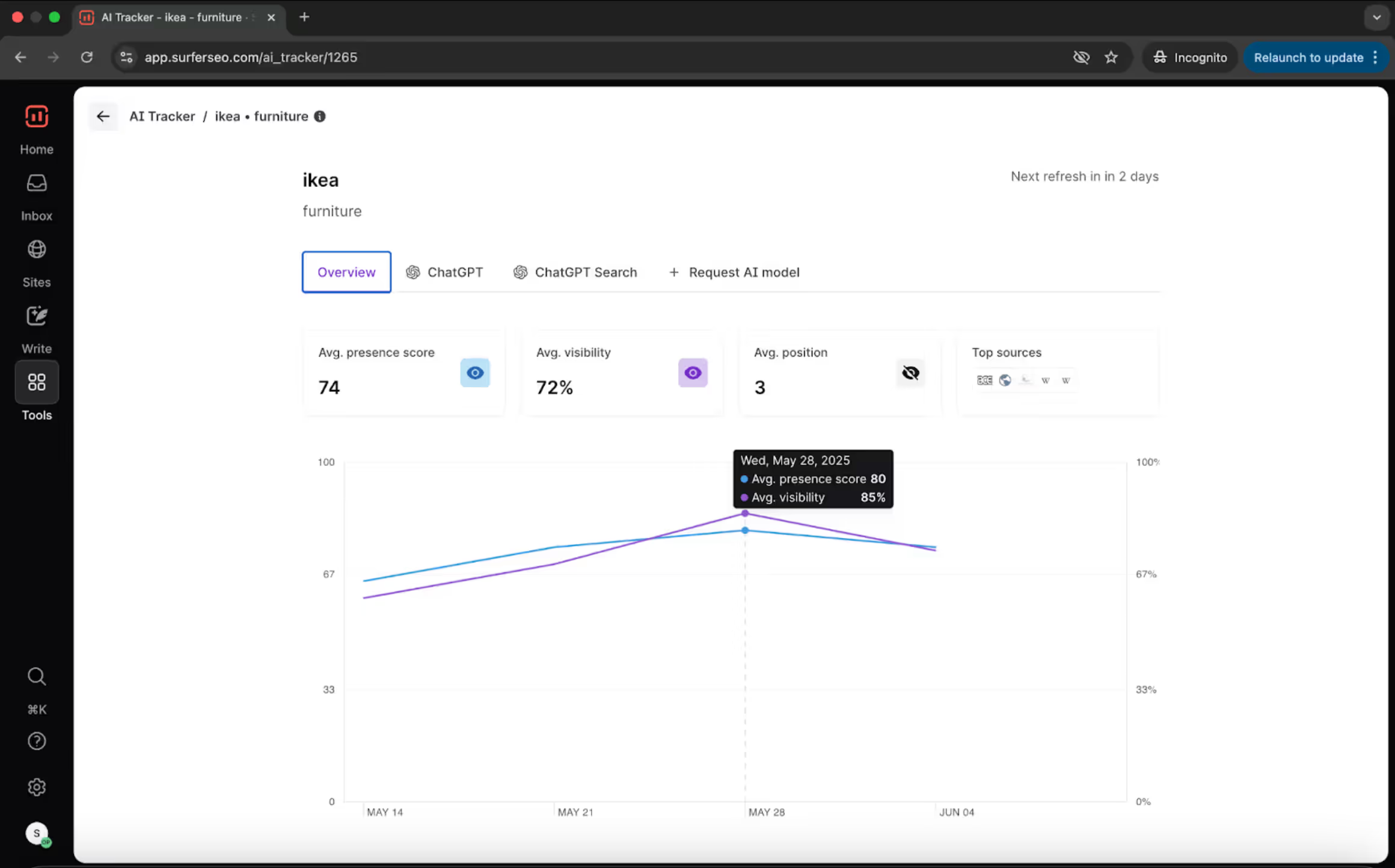
Input your brand name, topic, language, and choose what prompts you want to track. The tool shows easy-to-understand visual trends, allowing you to track visibility and average position in AI search results and LLMs.
Key takeaways
- AI search results are changing user behavior, with more people using tools like ChatGPT to answer queries, similarly to how they would previously have used search algorithms like Google
- Features like AI overviews are also reducing the need for readers to click through to articles and instead creating more zero-click searches
- Optimize your content for AI search results to appear in AI-related searches and to build brand awareness and authority
- Ensure your content is clear and easy to understand so AI can understand and repurpose it
- Implement templates and tables to create easy to rank for content in AI searches
- Add credible sources and expertise to give AI a reason to rank your content and link to your article
- Get a Google knowledge graph to increase the likelihood of appearing in LLMs
- Invest in Digital PR to build brand awareness and visibility in AI results
- Track and measure brand mentions, prompts, and queries in AI search results by using a tool like Surfer AI Tracker



